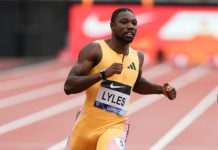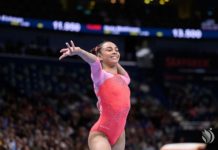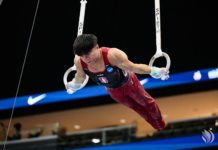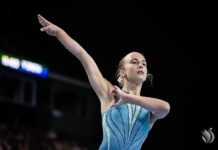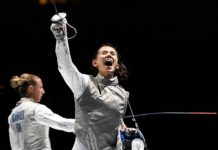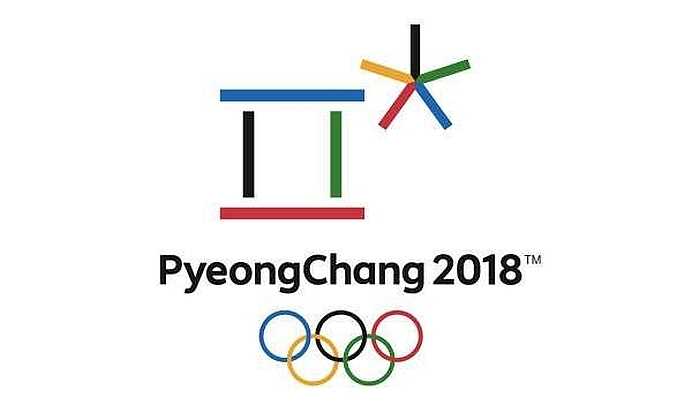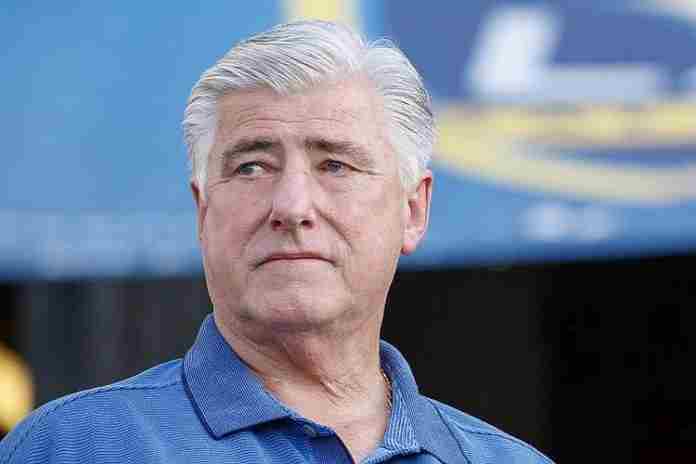As the calendar runs out on 2018, it’s worth looking back at the stories that were the most compelling, the most exciting and the most gut-wrenching over the course of the year.
We’ve identified our top 10 stories of the year in Olympic sport, with today’s edition profiling nos. 10-6:
10. Cycling: Britain sweeps the Grand Tours
The biggest prizes in cycling are the Grand Tours: the Giro d’Italia, the Tour de France and the Vuelta a Espana. In 2018, a British rider won them all.
At the start of the year, Chris Froome was the talk of the sport. Not only had he won the Tour de France for a third straight time, he also won the Vuelta a Espana … and came up positive for doping, thanks to an asthma medication. He was eventually cleared, but many labeled him a cheat.
He entered the Giro d’Italia and was immediately off the pace, but summoned a miracle finish in Stage 19 to take the lead for good and became the first British rider to ever win that race. Moreover, he became the first man since France’s Bernard Hinault in 1983 to hold the title in all three Grand Tours.
Froome was the favorite to win a fifth Tour de France, but he had all kinds of problems in the early stages and it became obvious that his Sky teammate, Geraint Thomas, was in better condition. And it was Thomas who won the race, with Froome putting on a sensational final few days to get third.
Neither Froome nor Thomas rode in La Vuelta, but another British rider stepped up. This time it was the promising youngster, Simon Yates, who fulfilled his potential and won by 1:46 over Spain’s Enric Mas. It was the second time ever that riders from one country had won all three Tours in a single year; it had only been done in 2008, when Alberto Contador (Giro and La Vuelta) and Carlos Sastre (Tour de France) won all three for Spain. Amazing.
9. The Youth Olympic Games in Buenos Aires
There was some concern over how the 2018 Youth Olympic Games would be handled in Argentina, as it was the first “Olympic” event held in South America since the 2016 Rio Games … which were less than perfect.
But the Argentines were up to the task, especially in producing an open-air, free-to-attend Opening Ceremony in and around the Obelisco in downtown Buenos Aires, watched by a reported 225,000 people. The size and enthusiasm at the event sent International Olympic Committee chief Thomas Bach into a rapture, dreaming of future Olympic ceremonies of the same size or bigger.
Some 3,997 athletes from 206 countries attended the Games and were cheered on by about one million spectators, who flocked to the modestly-sized venues in large numbers as admission was free. The event was very much a feel-good story.
One cautionary note: the budget for the YOG was projected at $104.3 million in the Buenos Aires bid in 2013, but came in around $140 million. That was cheered as a victory for the organizers, as the budget looked to go as high as $200 million at one point. But it was still 34% higher than expected.
8. Simone Biles returned, better than ever
American gymnast Simone Biles dominated the 2016 Olympic Games, winning the All-Around , Floor and Vault, plus a bronze on the Beam.
She took a year off from gymnastics, appearing everywhere, participating in “Dancing With The Stars” but promising to return to the gym. She did and stunned everyone with her performances in 2018.
She appeared to be better than ever, with even more speed and power than in Rio. The ultimate proof came at the World Championships in Doha (QAT). She led the U.S. to the team title, won the All-Around again – her fourth, a record – and then won the Floor and Vault again. She picked up a silver in the Uneven Bars and a bronze on the Beam, winning a medal in all six events on the program.
Her win in the All-Around over Japan’s Mai Murakami was by an astonishing 1.693 points, an unheard-of margin in gymnastics. Biles became only the eighth woman in history to win medals in all four apparatus in a single Worlds; it hadn’t been done in 35 years. She now has 20 Worlds medals, tied for the most ever with Russian Svetlana Khorkina (1994-2003) … for now.
And all of this while competing with a kidney stone that was diagnosed in Doha. Oh, yes, and she’s 21 years old. Incredible.
7. The 2018 Olympic Winter Games in PyeongChang
It’s hard to imagine an Olympic Games as only no. 7 on our list, but that’s where the PyeongChang Games ended up.
These were remarkable Games in many ways. The number of events passed the century mark, with 102 in seven sports. A record total of 92 nations competed. The emotional Opening Ceremony that had the Koreas marching in together made an unforgettable impact.
The competitions were sensational, although the critics pointed to the less-than-full grandstands at some events. But there was no doubting the magic of moments like:
∙ Dutch skating star Jolien ter Mors, who became the first female athlete to win medals in two different sports in the same Winter Games, winning the Speed Skating 1,000 m and then scoring a bronze medal in the Short Track 3,000 m relay.
∙ She was surpassed by Czech star Ester Ledecka, who first authored a shocking, upset win in the Alpine women’s Super-G and then a gold in the Snowboard Parallel Giant Slalom, making her the first woman to win gold medals in two different sports in the same Winter Games!
∙ Norwegian Cross Country ace Marit Bjoergen, who became the greatest medal winner in the history of the Winter Games with a bronze medal in the women’s Team Sprint and then a gold in the 30 km Classical race. Those medals gave her 15 career OWG medals, the most by any athlete in history.
∙ Emotional figure skating performances from Yuzuru Hanyu (JPN), Alina Zagitova (RUS), the German Pair of Aliona Savchenko and Bruno Massot and Canada’s Tessa Virtue and Scott Moir (CAN).
∙ The U.S.-Canada women’s ice hockey final, won by the Americans, 3-2, in a shoot-out thanks to Jocelyne Lamoreaux’s goal and a final save by keeper Maddie Rooney.
The U.S. had other highlights as well, including dazzling performances from Shaun White and Chloe Kim to win the Snowboard Halfpipe events, John Shuster’s rink in men’s Curling and the first-ever Cross Country gold medal by Kikkan Randall and Jessica Diggins in the women’s Team Sprint.
The best team in PyeongChang was Norway, with 39 medals (14-14-11), followed by Germany (31: 14-10-7) and Canada (29: 11-8-10) and the U.S. (23: 9-8-6).
Once the Games ended, the squabbling began over the costs of the Games, estimated at $12.9 billion, and the costs of upkeep of the venues which were not torn down, which is still being resolved.
6. The IOC exerts its authority, and boxing and feels the heat
The IOC got tough on several sports in 2018, but none more so than boxing, whose internal governance collapsed, followed by the federation (AIBA) electing Gafur Rakhimov (UKR), accused by the U.S. Treasury Department of being a major drug trafficker, as president. The IOC has cut off payments to AIBA and has appointed a committee to decide whether to relieve it of responsibility for boxing at the 2020 Olympic Games … but without harm to the boxers (whatever that means). Wow.
We’ll have nos. 5-1 on Monday: more drama on the field and some unbelievable activities off of it.
Rich Perelman
Editor











